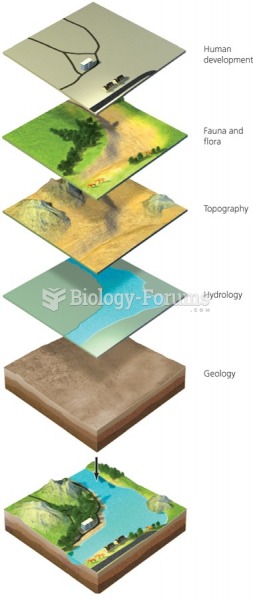|
|
|
Approximately 500,000 babies are born each year in the United States to teenage mothers.
Egg cells are about the size of a grain of sand. They are formed inside of a female's ovaries before she is even born.
Less than one of every three adults with high LDL cholesterol has the condition under control. Only 48.1% with the condition are being treated for it.
Many supplement containers do not even contain what their labels say. There are many documented reports of products containing much less, or more, that what is listed on their labels. They may also contain undisclosed prescription drugs and even contaminants.
The highest suicide rate in the United States is among people ages 65 years and older. Almost 15% of people in this age group commit suicide every year.






